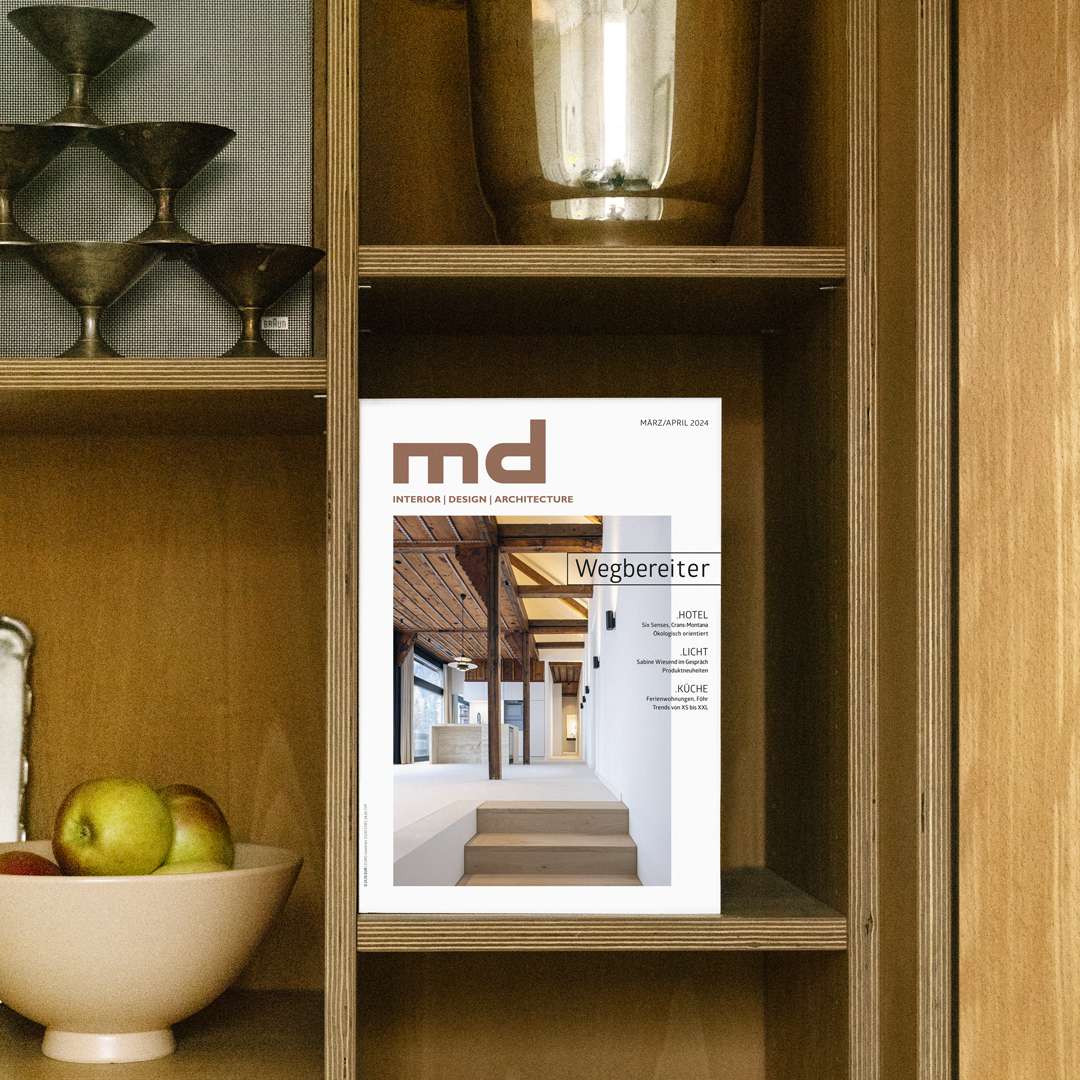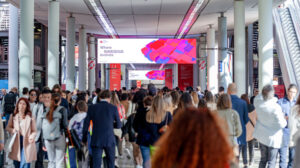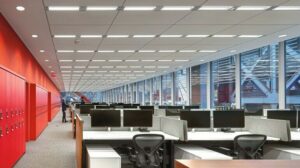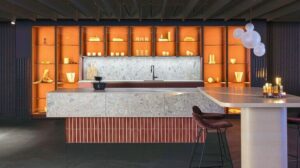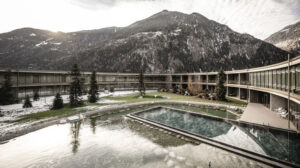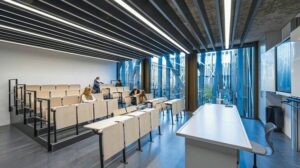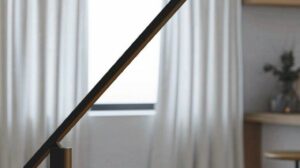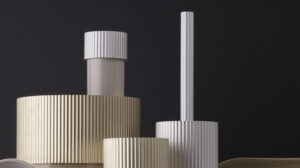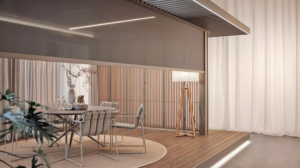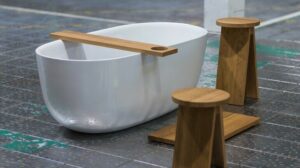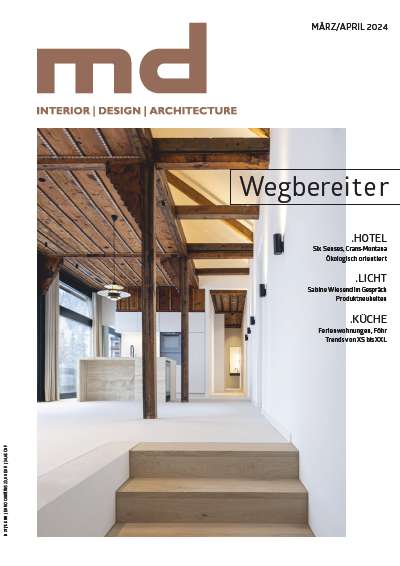Der Businessplan klingt an für sich plausibel: Man zerlegt Interieurprodukte wie etwa Pendelleuchten in zwei Komponenten, ein einheitliches Technikmodul und den Lampenschirm als gestalterisch prägendes Teil.
Den können Kunden via Online-Konfigurator in gewissen Freiheitsgraden variieren: Größe, Kontur, Farbe, Textur usw. Produziert wird auftragsbezogen, in „Losgröße Eins“ per 3D-Druck – ohne Werkzeug- oder Lagerkosten, mit schlanker Logistik, eventuell sogar in dezentralen „Fabs“. 3D-Druck gehörte zu den meist gehypten Technologien der vergangenen Dekade, Aufmerksamkeit war entsprechenden Ideen also gewiss.
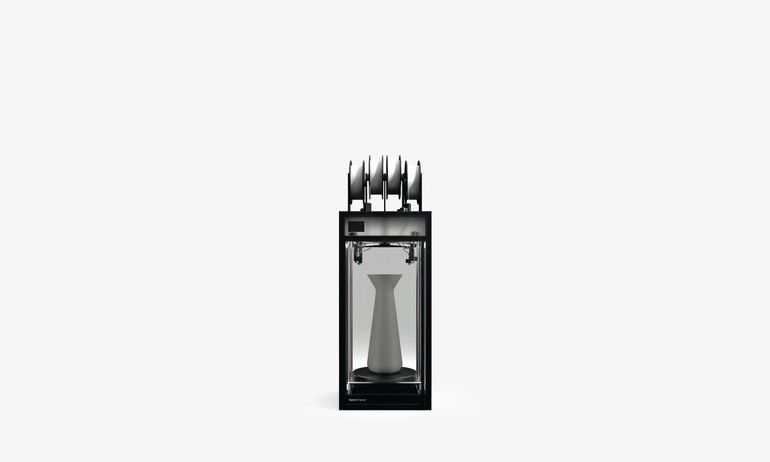
Doch von einschlägigen deutschen Start-ups wie Anylamp oder Fabric-Light sind im Netz nur noch Reste in Form verwaister Onlineshops oder geplatzter Kickstarter-Finanzierungen übrig. Seit vergangenem Jahr versucht in den USA mit Gantri.com ein weiteres Start-up auf diesem Feld sein Glück.
Wie sich der Ansatz des Gründers Ian Yang bewährt, der auf die Kooperation mit jungen Designern, minimierte „Time-to-Market“ und selbst entwickelte, schnellere 3D-Drucker in eigenen Produktionsstätten setzt, wird sich zeigen.
Druckvoll aus der Nische
Dass die Gründer trotz der gemischten Resultate nicht ganz falsch lagen, zeigt sich daran, dass sich inzwischen auch große europäische Unternehmen wie Grohe oder Signify, die ehemalige Philips Lighting, des Themas annehmen. Ob sie mit der Macht ihrer Marken 3D-gedruckte Produkte aus der Nische führen können?
Sie verfolgen jedenfalls sehr unterschiedliche Strategien. Während Grohe auf 3D-gedruckte Armaturen im absoluten Luxussegment setzt, soll es bei Signify individualisierte Leuchten für alle geben: Vom Endverbraucher bis zum Profi, beispielsweise im Ladenbau. Diesen Anspruch unterstreichen die Niederländer durch massive Investitionen. In Maarheeze bei Eindhoven fahre aktuell eine Fabrik mit mehreren Hundert 3D-Druckern hoch, teilt das Unternehmen mit: weitere seien in den USA, in Indien sowie in Indonesien geplant.
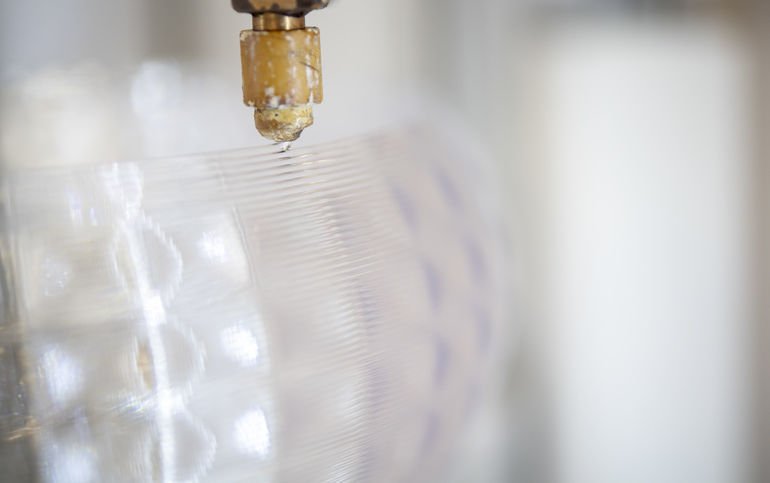
3D-Druck: Wo liegt der Vorteil?
Ihre Leuchten aus dem Drucker präsentierten die Niederländer zuletzt auf der Fachmesse Euroshop in Düsseldorf. Verblüffend: Einem Großteil der im FDM-Verfahren additiv aus Kunststoff-Filament gefertigten Mo-delle sieht man ihre neuartige Produktionsweise nicht ohne Weiteres an. Auf den ersten Blick könnten die unauffälligen weißen Deckeneinbauleuchten oder schwarzen, zylindrischen Stromschienen-Spots auch konventionell gefertigt sein.
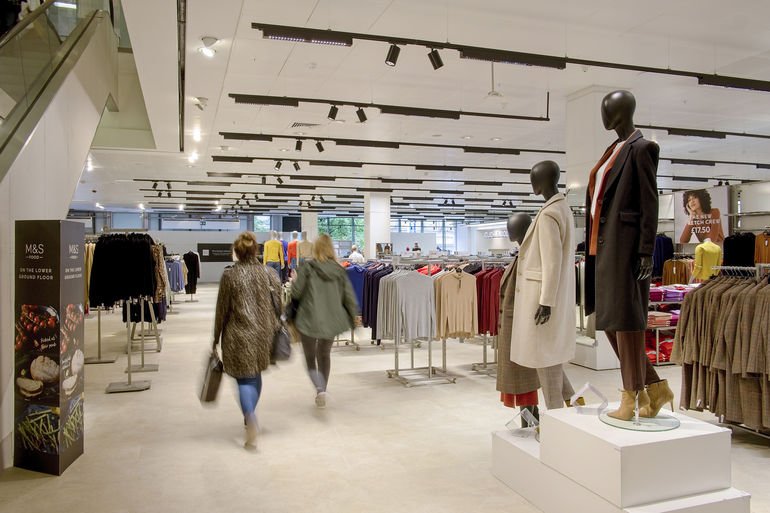
Wo liegt also der Vorteil? Die Deckeneinbauleuchten können zum Beispiel mit Einbauringen nach individuellem Maß geordert und gedruckt werden: Ideal, so Signify, um alte Beleuchtungsanlagen auf LED umzurüsten. Bei den Spots dient der zylindrische Körper nur mehr als „Halter“ für standardisierte Lichttechnik-Module aus LED und Reflektor, die Betriebsgeräte sind in den Stromschienen-Adapter integriert.
Die Abwärme der LED-Module setzt der Leistung dieser Konstruktion Grenzen: Weder die Kühlwirkung noch das perfekte Finish etwa von Aluminium-Druckguss lässt sich so erreichen – High-End-Strahler sehen sicherlich anders aus.
Dafür punkten diese Leuchten laut Hersteller mit einer günstigeren CO2-Bilanz als vergleichbare Metallkonstruktionen, sowohl bei Material als auch in Produktion und Logistik. Die Preise seien konkurrenzfähig und die Produkte daher insbesondere für Anwender attraktiv, die ihren eigenen Unternehmen Nachhaltigkeitsziele gesetzt haben.
Die Individualisierungsmöglichkeiten liegen im Detail – zum Beispiel in Rillen- oder Gewebe-effekten für die Oberfläche und einer großen Auswahl an Materialfarben.
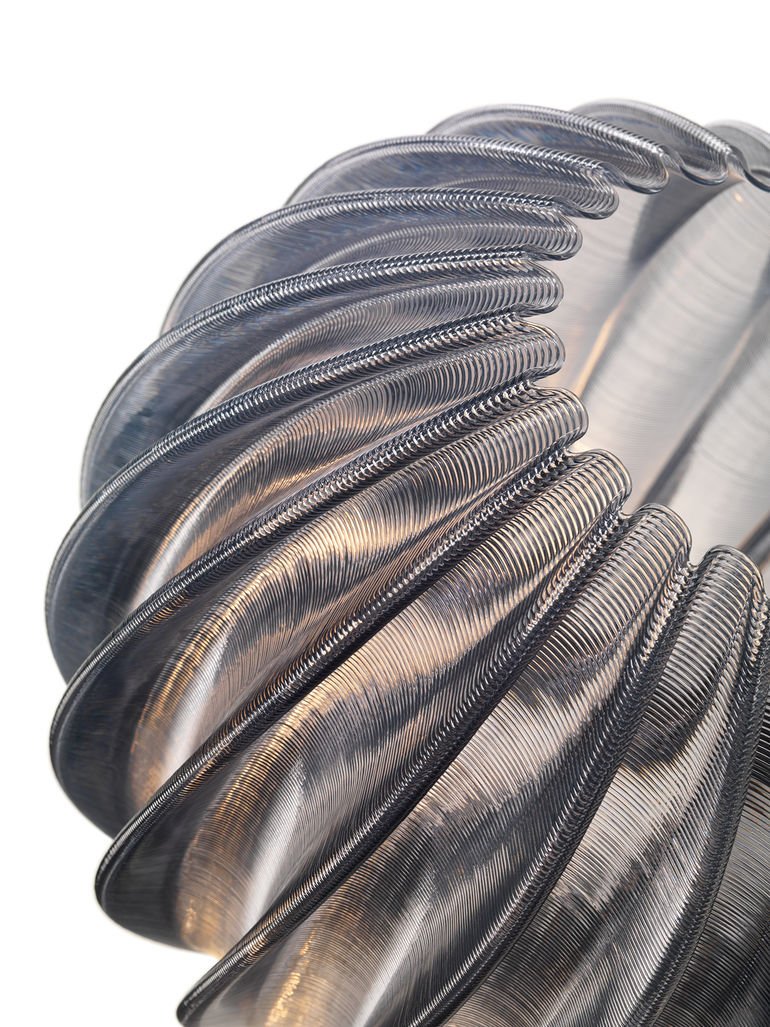
Schließlich versprechen die gedruckten Leuchten den Einstieg in die Kreislaufwirtschaft, denn der Hersteller kündigt an, Abfälle und ausgemusterte Gehäuse wieder in den Produktionsprozess zurückzuführen.
Parallel zum klassischen B2B-Vertriebsweg gehen die Niederländer auch mit dem anfangs geschilderten Geschäftsmodell an den Start. Seit wenigen Wochen ist ein Katalog und Konfigurator für Pendelleuchten online, sowohl für den professionellen Einsatz etwa in Ladenbau und Gastronomie als auch für Konsumenten im Wohnbereich.
Pionier in der Anwendung ist hier die niederländische Supermarktkette Albert Heijn. Dort werden individuell und saisonal geformte Pendelleuchten überm Obst und Gemüse regelmäßig ausgetauscht. Die alten Schirme recycelt Signify und verwendet das Material wieder für neue Schirme.
Unikate in avanciertem Design
Das Commitment in Sachen 3D-Druck lässt darauf schließen, dass man bei Signify offensichtlich überzeugt ist, bestimmte Marktsegmente auf diese Weise wirtschaftlich bedienen zu können. Im Vergleich scheinen die Aktivitäten des Armaturenherstellers Grohe deutlich vorsichtiger. Die Westfalen präsentierten im vergangenen Jahr auf der ISH in Frankfurt zwei Wasserhähne, die im Lasersinterverfahren aus Edelstahlpulver hergestellt werden.
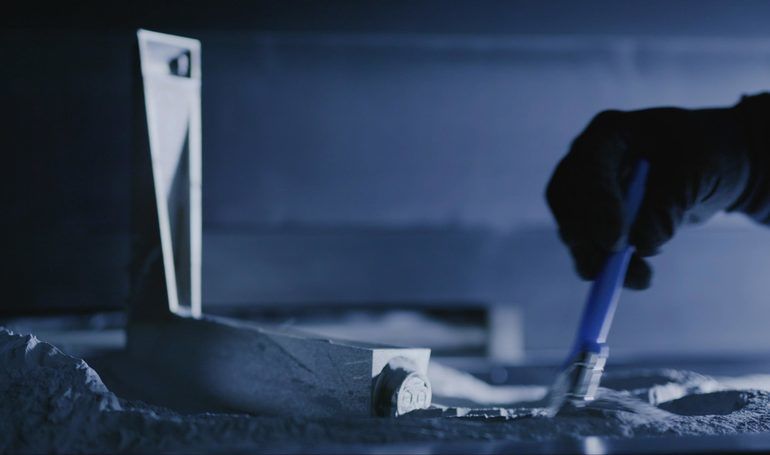
Und es gibt sogar schon eine Praxisanwendung: Das spektakuläre Unterwasser-Restaurant Under in Norwegen wählte das Modell ‚Atrio Icon 3D‘ für seine Waschräume. Zwar wirken Design und Technologie der gedruckten Armaturen wesentlich avancierter als die Kunststoffleuchten, die Signify lanciert.
Dass dafür, angelehnt an die Formensprache der existierenden Armaturenserien ‚Atrio‘ und ‚Allure Brillant‘, eigene futuristische Entwürfe entstanden, deren aufs Äußerste reduzierte Hohlräume mit anderen Verfahren gar nicht zu fertigen gewesen wären, hat allerdings seinen Preis – und der ist fünfstellig.
Die Entwicklungskosten sowie das aufwendige, in Handarbeit erfolgende Finish der gesinterten Formen verurteilen die Produkte bis auf Weiteres zur Existenz in der Nische für luxuriöse Unikate.
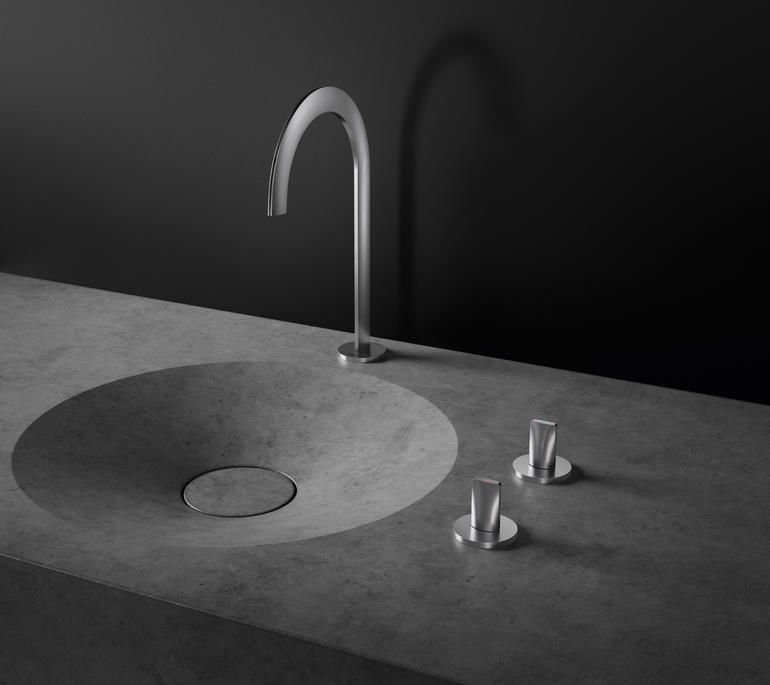
Ein Individualisierungsprozess kann auf diesem Niveau auch nicht einfach durch Parametrisierung oder gar in einem Online-Konfigurator erfolgen, sondern erfordert eine enge Abstimmung zwischen Hersteller und Kunde. Damit platzieren sich die beiden Marken mit ihren Konzepten an zwei gegensätzlichen Polen des Einsatzspektrums von 3D-Druck.
Hier die schnelle, flexible, ressourcenschonende Produktion von technisch recht simplen Leuchten – oder sollte man sagen, Haltevorrichtungen für Lichttechnik-Module? Dort das futuristische, als Imageträger konzipierte High-End-Produkt für exklusive Anwendungen. Man darf gespannt sein, wo sich andere Marken mit ihren Interior-Produkten zukünftig entlang dieser Skala im 3D-Druck positionieren.
3D-printed lighting and fittings
Escaping the niche
The business plan as such sounds plausible: Break down interior design products, such as pendulum lamps into two components, a standardized technology module and the lampshade as the main design element. Customers can vary this element to a certain extent in an online configurator: Size, outline, color, texture, etc. Products are produced on an order-by-order basis with a batch size of one using 3D printing – without tooling or warehousing costs, but instead boasting streamlined logistics, potentially in so-called, local fabs. 3D printing has been amongst the most hyped technologies in the past decade and consequently any associated ideas attracted some degree of attention.
However, products by pertinent German start-ups like Anylamp or Fabric-Light are nowadays merely available online as odd lots from outdated online shops or failed Kickstarter financing. Gantri.com, established last year, is a further start-up trying to break through on the US market. Time will tell how founder Ian Yang‘s approach performs, as it focuses on collaborations with young designers, a minimized time to market and individually developed, faster 3D printers at in-house production sites.
Catapulting from the niche
The fact that founders were not entirely wrong despite very mixed results becomes evident from large European companies, such as Grohe or Signify (formerly Philips Lighting) having now also started looking into the subject. Will they be able to use their brand power to help catapult 3D-printed products from the niche? Whatever the outcome, their strategies are very different. While Grohe centers activities around 3D-printed, absolutely luxurious fittings Signify focuses on customized lighting for everyone: From end users to professionals, for instance in shopfitting. The Dutch company is underlining this approach with significant investment. The company reports that a factory featuring several hundred 3D printers is currently being commissioned in Maarheeze near Eindhoven: further factories are planned in the US, India and Indonesia.
What are the benefits?
The Dutch manufacturer recently showcased its printed lighting at the Euroshop specialist exhibition in Düsseldorf, Germany. Astonishing: It is not easy to identify the new production method applied to the largely additively produced models made of plastic filament as part of the FDM method. At first glance these inconspicuous white, flush-mounted ceiling lights or black, cylindrical current rail spotlights could have also been produced by conventional methods. So, what are the benefits? For instance, the flush-mounted ceiling lights can be ordered and printed with individually customized installation ring dimensions: Ideal, according to Signify, to convert existing lighting systems to LED technology. The cylindrical body merely serves as the holder for spotlights, securing standardized LED and reflector lighting technology modules while the operating units have been integrated into the current rail adapter. The heat dissipated by the LED modules restricts this design‘s output: unattainable are the cooling effect or perfect finish of, for instance, die-cast aluminum– products look nothing like high-end spotlights.
However, according to the manufacturer these lights score high marks with a better carbon footprint compared with comparable metal designs, in terms of material, production and logistics. According to manufacturer statements prices are competitive and for this reason the products were particularly appealing to users who have specified sustainability targets within their own companies. Details can be customized – for instance grooves and fabric effects for surfaces plus an ample range of material colors. Ultimately these printed lights promise to open the door towards a recycling economy as the manufacturer plans to reintroduce waste and discarded housings back into the production process. In parallel to traditional B2B sales channels the Dutch company is also launching with the business model mentioned at the beginning of the article. A catalog and configurator for pendulum lamps has been online for a few weeks now, both for professional applications, such as shopfitting and catering, as well as for private consumers and their living spaces. Dutch supermarket chain Albert Heijn is as a pioneer in this segment. The chain‘s shop floors feature individually and seasonally shaped pendulum lights above the fruit and vegetable display that are regularly replaced. Signify recycles used lampshades and reuses the material for new lampshades.
Unique objects
These levels of commitment in terms of 3D printing let‘s us conclude that Signify seems convinced that the company can profitably serve certain market segments in this way. By comparison, fittings manufacturer Grohe seems to be handling the issue with considerably more care. The Westphalian company showcased two faucets at last year‘s ISH in Frankfurt, Germany, which had been produced as part of a laser-based sintering process on the basis of stainless steel powder. And practical applications are already available: The spectacular, underwater restaurant Under in Norway chose the Atrio Icon 3D model for its washroom facilities. The design and technology of the printed fittings seems significantly more advanced than the plastic lighting Signify is launching on the market.
However, the fact that the company‘s own, futuristic designs have been developed on the basis of the shapes dominating existing Atrio and Allure Brillant fittings series, which feature extremely reduced cavities that would have otherwise been impossible to produce, comes at a handsome price – a five-figure sum. For now, the development costs as well as the handcrafted finish of the sintered shapes condemn the products to an existence in the niche for luxurious, unique products.
Implementing a customizing process at this level cannot simply be done by configuring parameters or even using an online configurator, it requires close coordination between manufacturer and customers. Consequently, the two brands are positioning their concepts at the polar opposites of the 3D printing application range.On the one hand fast, flexible production of relatively simple lighting that preserves resources – or should we call them holders for lighting technology modules? On the other hand futuristic high-end products designed as flagship image products for exclusive applications. We can look forward to where other brands will be positioning their interior design products along this scale in the future





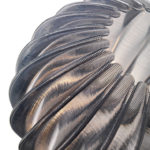
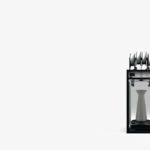
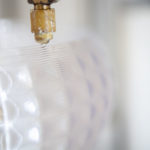
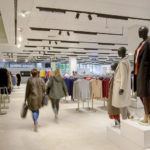


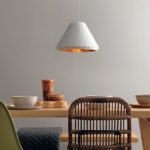
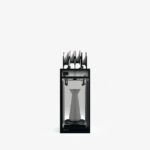
 Smarte Strategien
Smarte Strategien